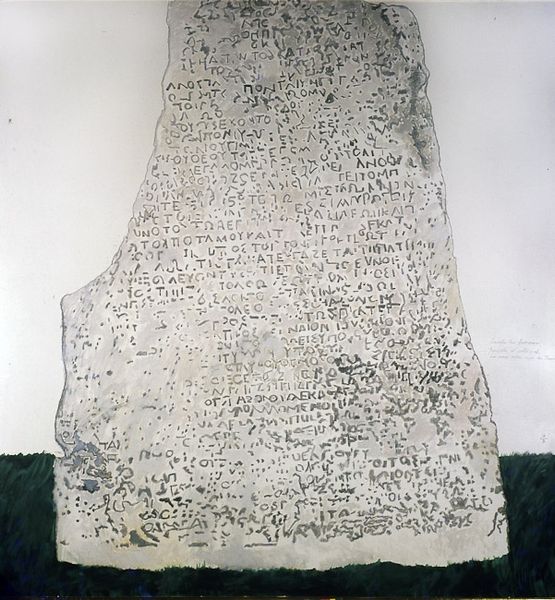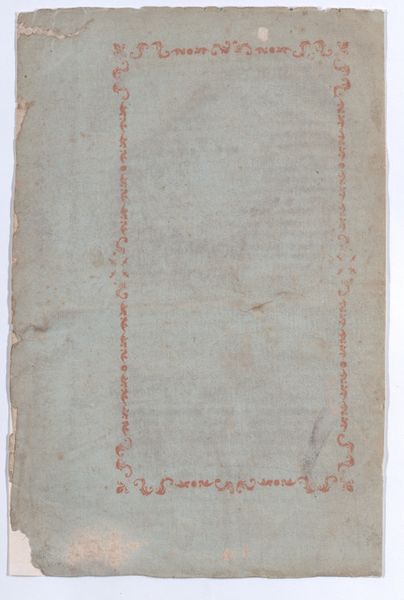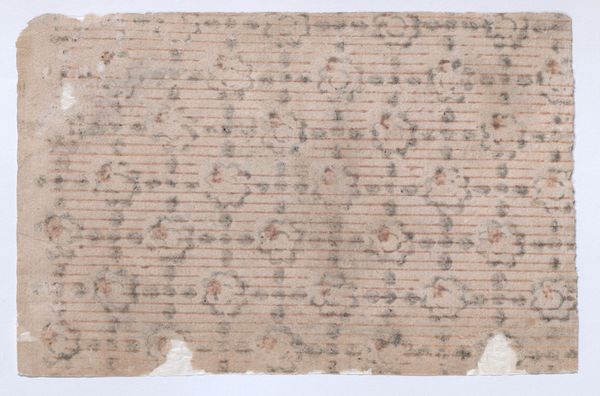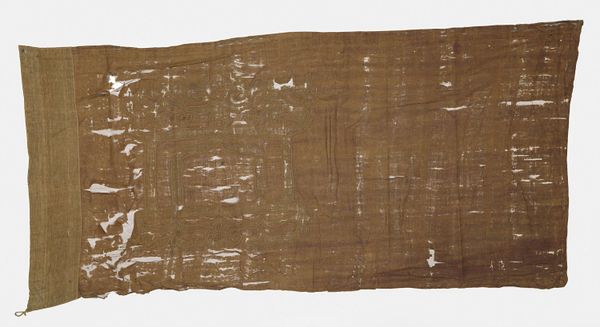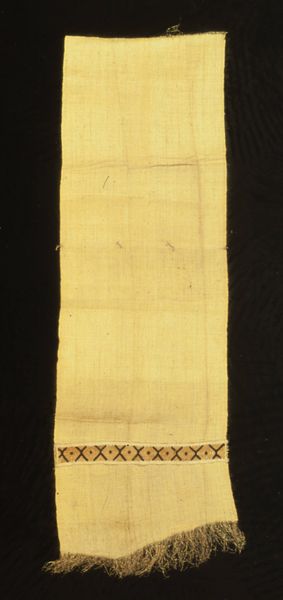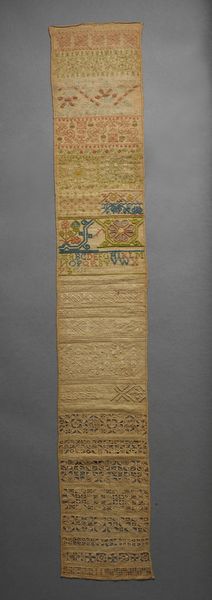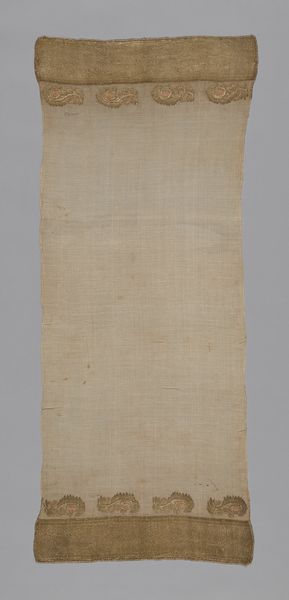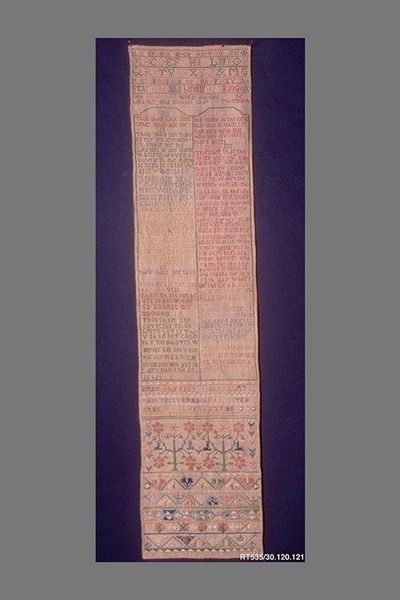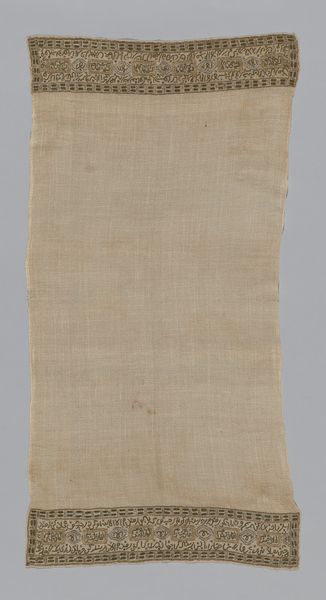
drawing, textile, ink, wood
#
drawing
#
sculpture
#
textile
#
ink
#
wood
#
islamic-art
#
calligraphy
Dimensions: 26 1/4 × 8 1/4 × 1/4 in. (66.68 × 20.96 × 0.64 cm) (without base)26 1/2 × 8 1/4 × 3 1/2 in. (67.31 × 20.96 × 8.89 cm) (with base)
Copyright: No Known Copyright
Curator: This intriguing piece is a Qur'anic writing board, dating back to around the mid-20th century. It's currently held here at the Minneapolis Institute of Art. Editor: It looks incredibly tactile. The aged wood and dense script give it such a weighty, solemn presence, doesn't it? Curator: Absolutely. And consider the material transformation. Raw wood, carefully selected and prepared, becomes a surface for learning and religious practice. We see a convergence of nature, labor, and spirituality. Editor: The ink calligraphy dominates the form. Look at the rhythmic repetition of the letters; it creates a complex, almost mesmerizing visual texture. Notice, also, the square grid disrupting the otherwise continuous flow of the text. Curator: The grid is interesting. Beyond the formal break, could it point to the pedagogical system at play? Think of the countless hours of labor embodied in the student practicing their script, guided by an instructor and religious norms. The writing board serves as both a means of instruction and an instrument of cultural production. Editor: The interplay between precision and slight imperfection enhances its character. The way the ink bleeds slightly into the grain of the wood and the little damages create a sense of authentic human interaction. Curator: I agree. The medium carries significance itself. Wood was a readily available and affordable material, indicative of a specific time and place, directly relating to issues of class and access. The labor that went into procuring and shaping that wood becomes a vital part of the object’s history. Editor: Ultimately, this is an object that resonates far beyond its textual content through materiality, composition, and symbolic language. Curator: Indeed. This seemingly simple wooden board provides a window into the intertwining spheres of religion, education, and craftsmanship in a specific social setting.
Comments
minneapolisinstituteofart almost 2 years ago
⋮
Muslims strongly believe in the healing powers of the Qur’an. Although reading and writing is the main purpose for Qur’anic boards, in some parts of Islamic Africa they are also used by Muslim healers, who write specific verses on them, wash off the writings, and collect the diluted ink. The liquid is given to the sick to drink as holy medicine. This board, furthermore, has numerical “mystic squares” of 4 by 4 on either side that increase its potency. Such mathematical grids, based on the belief in divine relations between numbers and events, are sometimes put to healing purposes.
Join the conversation
Join millions of artists and users on Artera today and experience the ultimate creative platform.
